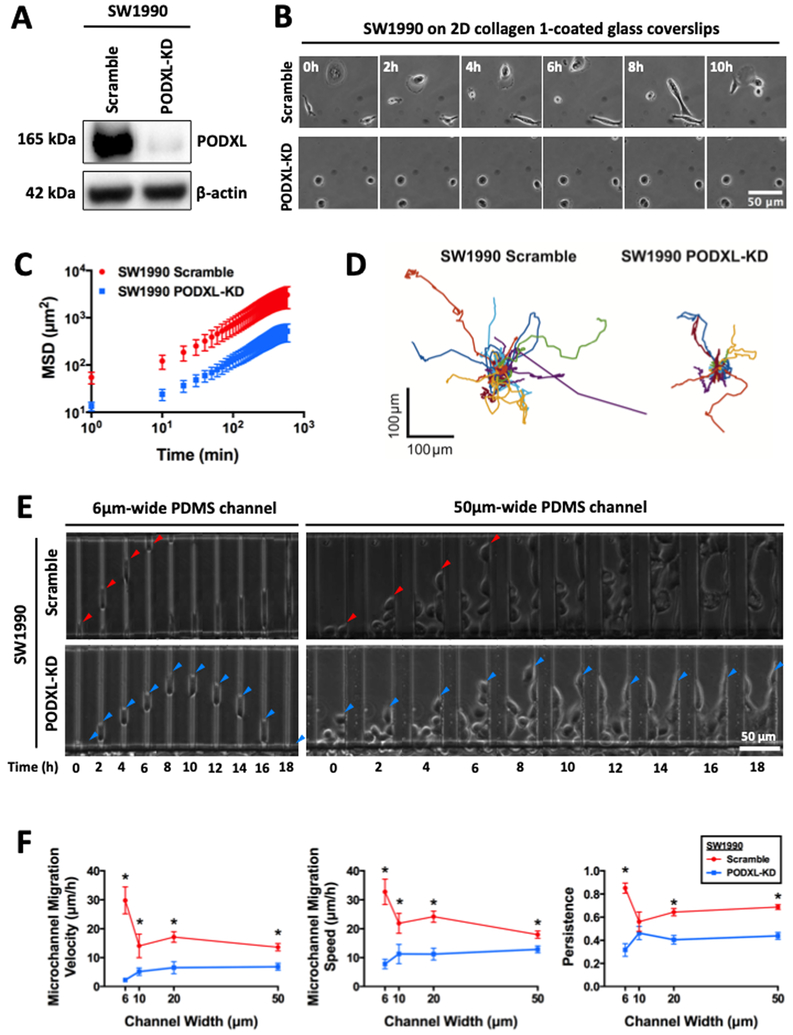Fig. 1. PODXL knockdown in pancreatic cancer cells suppresses random 2D migration and chemotactic migration inside unconfined and confined channels.
(A) Western blot showing efficient knockdown of PODXL in SW1990 pancreatic cancer cells using shRNA lipofectamine transfection followed by stable clonal selection. (B) Representative time-lapse micrographs of scramble control and PODXL-KD SW1990 cells migrating on 2D collagen I-coated glass coverslips. The images are spaced at 2 h intervals. (C) Average mean squared displacement (MSD) over time of migrating scramble control and PODXL-KD SW1990 cells. Data represent the mean±S.E.M from 3 independent experiments. (D) Superimposed images of individual trajectories of scramble control and PODXL-KD SW1990 cells migrating on 2D collagen I-coated surfaces. (E) Representative time-lapse micrographs of scramble control (top row) and PODXL-KD (bottom row) SW1990 cells migrating inside 6 μm-wide, confined microchannels (left panels) and 50 μm-wide, unconfined microchannels (right panels). The images are spaced at 2 h intervals. Arrowheads indicate the leading edge of a migrating cell. (F) Migration velocity (left panel), speed (middle panel) and persistence (right panel) of scramble control and PODXL-KD SW1990 cells in PDMS-based microchannels of 10 μm in height, 200 μm in length, and either 6, 10, 20 or 50 μm in width. Data represent the mean±S.E.M from at least 3 independent experiments. * represents p<0.05 between scramble control and PODXL-KD cells.

